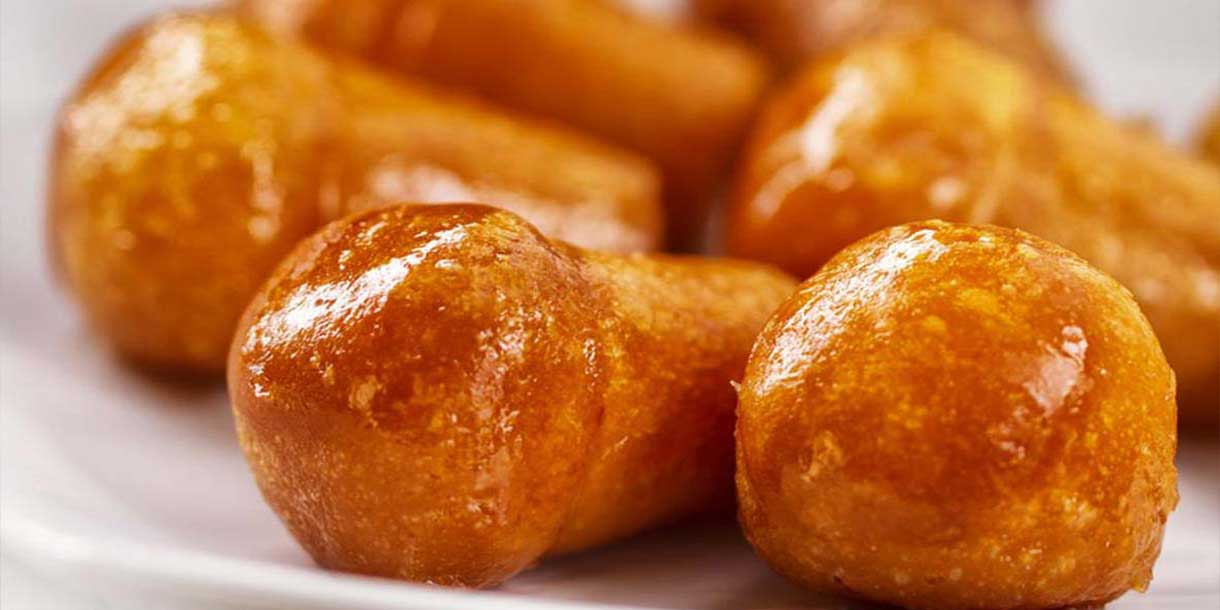Contrairement à ce que pense les napolitains, le baba n’est pas né à Naples.
Et pourtant il est l’un des protagonistes incontestés de la pâtisserie napolitaine.
Le classique baigné au rhum, le revisité avec le limoncello, et pour les plus gourmands, celui recouvert de crème pâtissière ou de Chantilly.
Le baba tel que nous le connaissons aujourd’hui était à l’origine un dessert à lévitation naturelle, provenant de Pologne (babka ponczowa), il arrive en France avant d’atterrir à Naples.
On dit que Stanislas Leszczynski, roi de Pologne de 1704 à 1735, l’inventa par hasard au début du XVIIIe siècle.
Le tsar aimait les sucreries, mais pas particulièrement le kugelhof, un dessert typiquement polonais composé de farine très fine, de beurre, de sucre, d’œufs et de raisins secs.
Même si la levure de bière était ajoutée à la pâte, pour obtenir une pâte moelleuse et aérée, il la trouvait encore trop sèche. Pour cette raison, fatigué d’avoir été servi pour la énième fois, un jour il la jeta à l’opposé de la table, où se trouvé une bouteille de rhum. Le gâteau trempé de cet alcool, laissa dans l’air un arôme enivrant et très invitant.
Le tsar de la Pologne, qui en plus des desserts, aimait bien de temps en temps soulever un peu le coude, goûta ce que semblait d’abord une catastrophe et, surprise de la surprise, c’était délicieux!
Il le nomma Ali Baba, en l’honneur du protagoniste du livre Les Mille et Une Nuits, qu’il aimait beaucoup. Le baba a débarqué à Versailles grâce à la fille de Stanislas qui épousa Louis XV et fit venir à la cour le pâtissier de son père: Nicolas Stohrer, qui connaissait bien la recette du Alì Babà.
Grâce à la maîtrise des confiseurs parisiens, la recette se développa, le nom fut abrégé en Baba et la forme pris définitivement la forme d’un chapeau. À Naples, le Baba arrive vers la fin du XVIII ème S. grâce aux Monsù, chefs français à la cours des Bourbons de Naples, sur la demande de la sœur de Marie-Antoinette, mariée à Ferdinand IV. Ce fut un coup de foudre et, même aujourd’hui, ce n’est pas dimanche si à la fin du repas les “paste” (desserts) n’arrivent pas avec l’intemporel Babbà (avec deux b parce que nous sommes à Naples).
a Fattoria Terranova offre ses versions particulières de cet exquis dessert: Baba au limoncello et Baba avec crème de citrons.
De pratiques bocaux qui en conservent toute leur fraîcheur, pour toujours avoir un petit Baba prêt à déguster seul ou en compagnie.
Contrary to what you might think, the origin and history of the babas are far from Naples.
One of the undisputed protagonists of Neapolitan pastry.
Classic rum-soaked, revisited with limoncello and, for the sweet tooth, covered with cream or stuffed with pastry cream.
The babà as we know it today was originally a naturally leavened cake from Poland (babka ponczowa), passed through France before arriving in Naples.
It is said that Stanislaus Lesczynski, king of Poland from 1704 to 1735, invented it by accident in the early eighteenth century.
The tsar was very fond of sweets but not particularly kugelhupf, a typical Polish dessert made with fine flour, butter, sugar, eggs and sultanas.
Even if brewer’s yeast was added to the dough, to obtain a soft and spongy paste, he still found it too dry.
For this reason, tired of being served for the umpteenth time, one day he threw him across the table, where he found a bottle of rum.
In doing so, the cake soaked in the liqueur, leaving a heady and very inviting scent in the air.
At that point the Czar of Poland, who in addition to sweets loved to raise his elbow a little from time to time, tasted what at first seemed like a disaster and, surprise of surprises, was exquisite!
He called that sweet delicious Ali Baba, in honor of the protagonist of the book The Thousand and One Nights, which he loved to read.
The baba landed at Versaille thanks to the daughter of Stanislaus who married the king of France Louis XV and brought with her the pastry chef of the court, Nicolas Stohrer, who knew well the recipe of Alì Babà.
Thanks to the skill of the Parisian confectioners, the recipe was perfected, the name was abbreviated to Babà and the form definitely took the form of a hat.
In Naples the Babà arrives thanks to the Monsù, French chefs at the service of the Neapolitan noble families.
It was love at first sight and, even today, it is not Sunday if at the end of the lunch the “pastas” do not arrive with the timeless Babba (with two bs because we are in Naples).
Fattoria Terranova offers its particular versions of the exquisite dessert: Baba with Limoncello and Baba with Limoncello cream.
Practical jars that preserve all the freshness, to always have a small Baba and enjoy it, alone or in good company.
